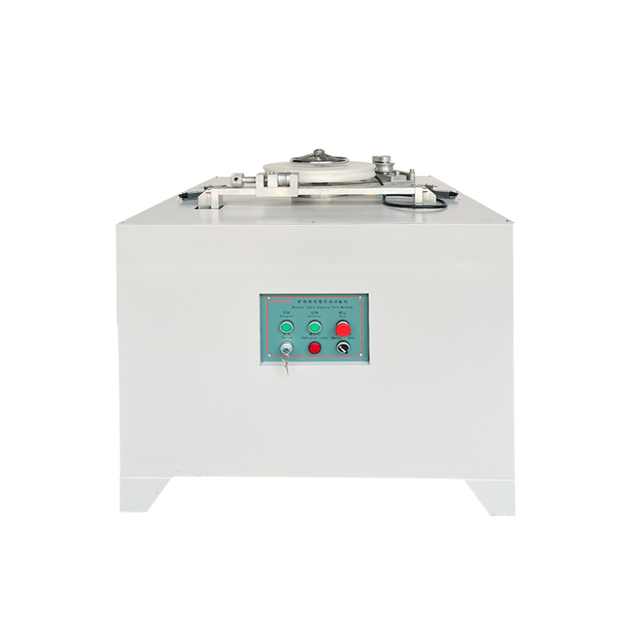tensile tester grips
Understanding Tensile Tester Grips Essential Tools for Material Testing
In the field of material science and engineering, the evaluation of material properties is crucial. One of the primary methods for assessing a material's strength and ductility is through tensile testing. This technique involves stretching a sample material until it fractures, helping engineers understand its behavior under tension. A critical component of this testing process is the tensile tester grips, also known as clamps or fixtures, which secure the material during the test.
The Role of Tensile Tester Grips
Tensile tester grips serve a fundamental purpose they hold the specimen in place while allowing for the application of force. The effectiveness of the grip is paramount, as insufficient clamping can lead to slippage or premature failure of the specimen, producing inaccurate results. The design and material of the grips can significantly impact the quality of the test, including factors such as alignment, uniformity of stress distribution, and overall integrity of the test results.
Types of Grips
There are various types of tensile tester grips, each designed for specific materials and testing requirements. The most common types include
1. Mechanical Grips These grips use a mechanical clamping mechanism to hold samples. They are effective for rigid materials and can provide a strong grip without damaging the specimen.
2. Hydraulic Grips Hydraulic grips apply force through a controlled hydraulic system, allowing for precise clamping pressure. They are particularly useful for testing softer or more ductile materials that can deform easily.
3. Pneumatic Grips Similar to hydraulic grips, pneumatic grips use air pressure to hold the samples. They enable quick adjustments and are ideal for applications requiring frequent changes in specimen types.
4. Wedge Grips These grips utilize a wedge mechanism to apply clamping force. They are versatile and can accommodate a range of material thicknesses and shapes.
tensile tester grips

5. Screw Grips A simpler design where a screw mechanism tightens the grip on the specimen. These are typically used for smaller samples and applications where high precision is not the primary concern.
Factors Influencing Grip Selection
Choosing the appropriate tensile tester grip involves several considerations
- Material Type Different materials exhibit varied behaviors under stress. Metals, polymers, and composites may require specific grips to prevent slippage or damage.
- Sample Shape and Size The dimensions and geometry of the specimen can dictate the type of grip needed. Wider or irregularly shaped samples may not be compatible with all grip designs.
- Testing Conditions Temperature, humidity, and the presence of chemicals can affect both the material being tested and the grips' performance. Selecting grips that can withstand environmental conditions is essential.
- Testing Standards Adhering to industry standards and regulations is vital to ensure the accuracy and reliability of the test results.
Conclusion
Tensile tester grips are vital components in the tensile testing process, influencing the accuracy of the results obtained. Understanding the different types of grips, their applications, and the factors that influence their selection can help engineers and material scientists perform effective and reliable tests. Proper use of grips not only ensures the integrity of the specimens but also enhances the quality of material performance data, thereby supporting advancements in material engineering and development. As technology evolves, the design and functionality of tensile tester grips will undoubtedly continue to improve, further enhancing their role in material testing.
-
Why the Conductor Resistance Constant Temperature Measurement Machine Redefines Precision
NewsJun.20,2025
-
Reliable Testing Starts Here: Why the High Insulation Resistance Measuring Instrument Is a Must-Have
NewsJun.20,2025
-
Flexible Cable Flexing Test Equipment: The Precision Standard for Cable Durability and Performance Testing
NewsJun.20,2025
-
Digital Measurement Projector: Precision Visualization for Modern Manufacturing
NewsJun.20,2025
-
Computer Control Electronic Tensile Tester: Precision and Power for the Modern Metal Industry
NewsJun.20,2025
-
Cable Spark Tester: Your Ultimate Insulation Assurance for Wire and Cable Testing
NewsJun.20,2025
 Copyright © 2025 Hebei Fangyuan Instrument & Equipment Co.,Ltd. All Rights Reserved. Sitemap | Privacy Policy
Copyright © 2025 Hebei Fangyuan Instrument & Equipment Co.,Ltd. All Rights Reserved. Sitemap | Privacy Policy
